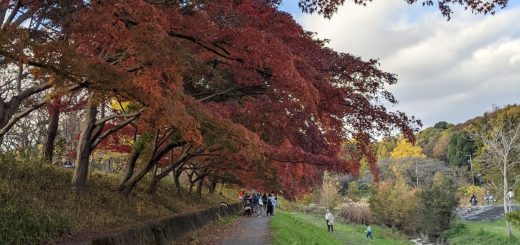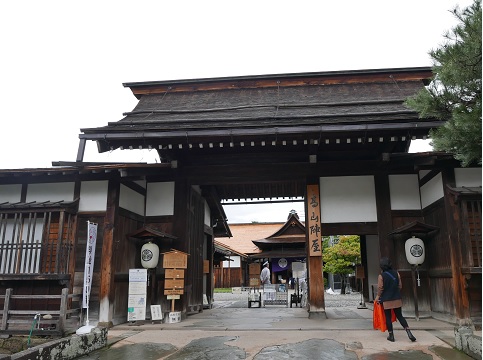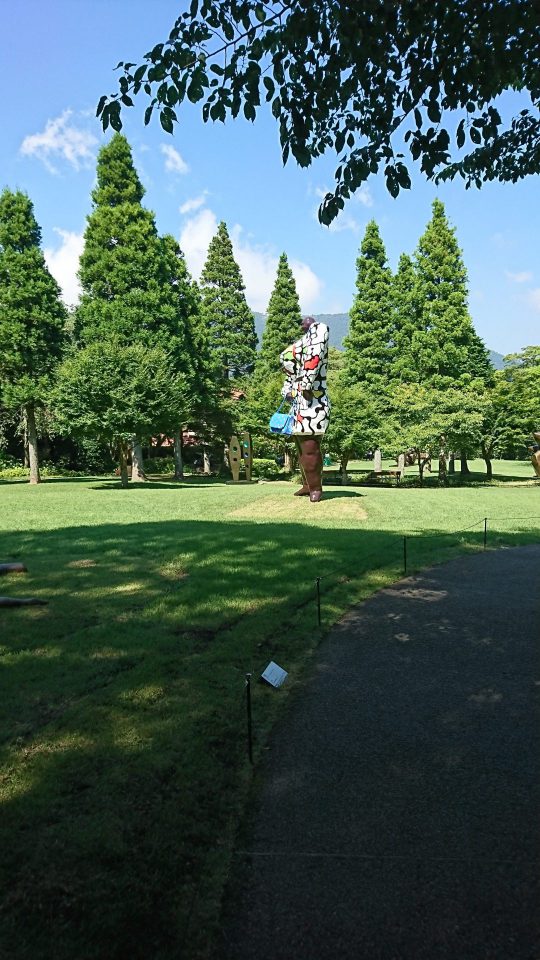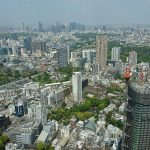Visit to Hotel Gajoen Tokyo
Today, I would like to introduce Hotel Gajoen Tokyo, which I visited for an art exhibition.
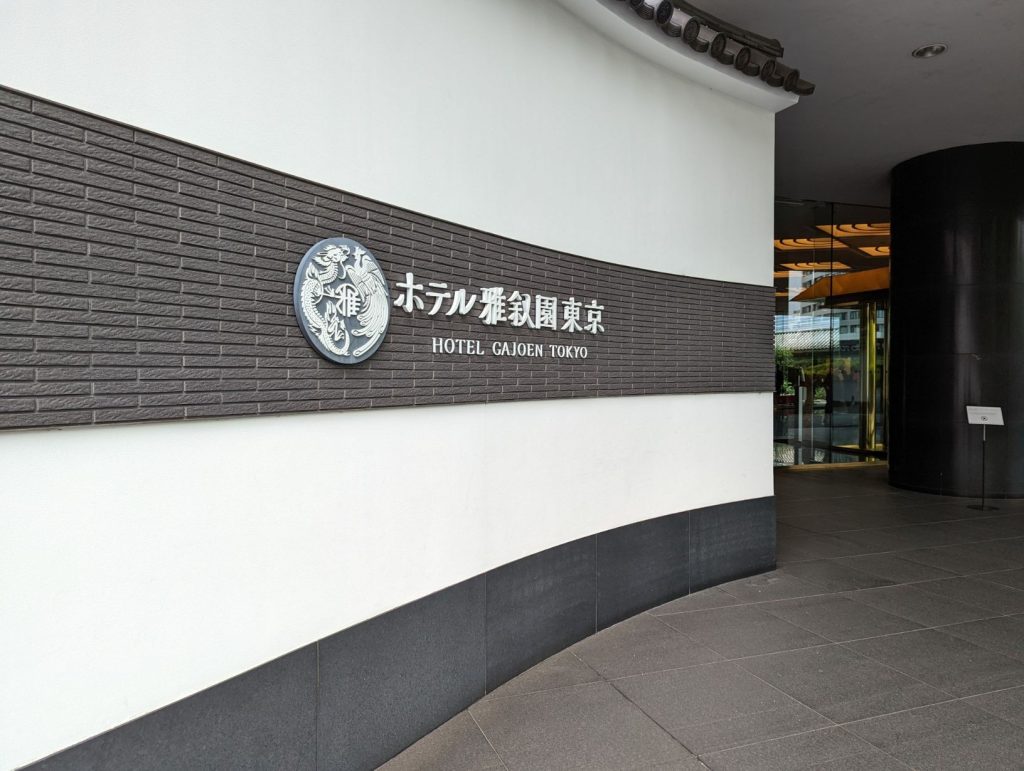
About Hotel Gajoen Tokyo
Hotel Gajoen Tokyo (ホテル雅叙園東京)is a hotel and banquet hall located along the Meguro River, a three-minute walk from Meguro Station. Meguro is near Shibuya. As the official website says, “A MUSEUM HOTEL of JAPAN BEAUTY,” the interior of the hotel is decorated with traditional Japanese decor, and the building itself is like a museum. Before that, it was called “Meguro Gajoen”(目黒雅叙園) and was mainly a banquet hall and wedding hall rather than a hotel.
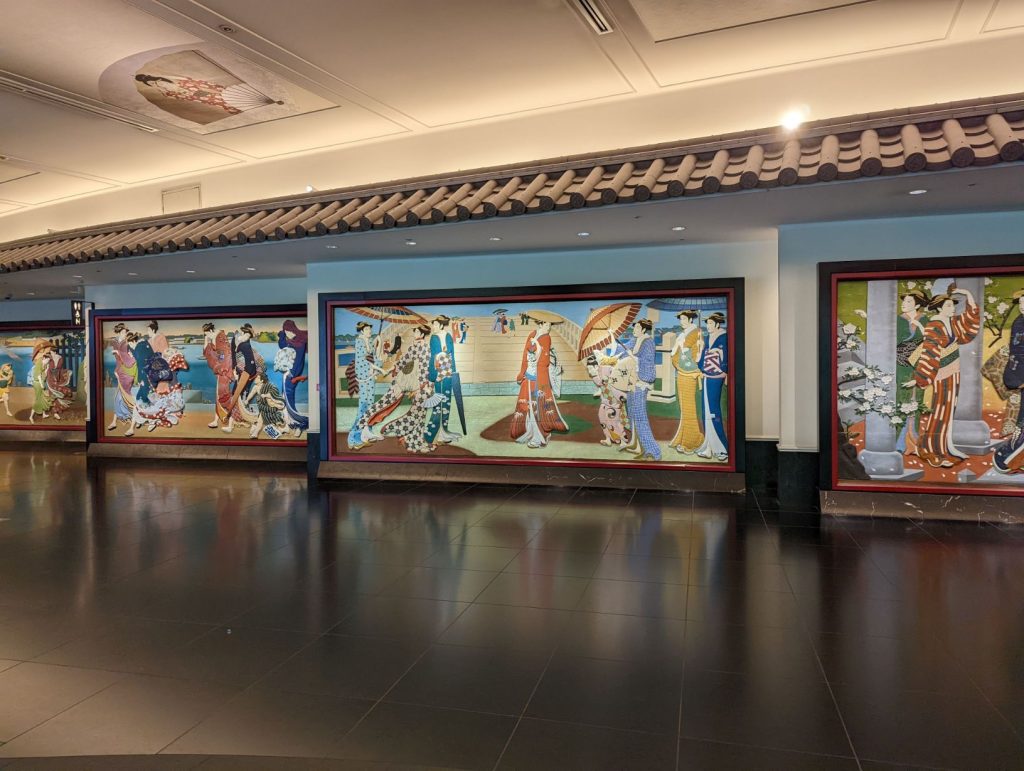
Meguro Gajoen was established in 1931 as a ryotei (Japanese-style restaurant) by Rikizo Hosokawa. The interior of the building is decorated with Japanese murals and sculptures. Just by visiting, you can feel Japanese tradition. It is also famous as a highly prestigious and highly desirable wedding hall.
| Location | 1-8-1 Shimo-Meguro, Meguro-ku, Tokyo |
| Access | 3 minutes walk down Gyoninzaka slope from Meguro Station |
| Official website | https://www.hotelgajoen-tokyo.com/en/ |
The best place to see “Hyakudan Kaidan”(百段階段)
The Hyakudan Kaidan is a 99-step wooden staircase. It is the only remaining wooden building in Gajoen, built in 1935, with 99 long stairs connecting the seven banquet rooms. It is designated as a Tangible Cultural Property by the Tokyo Metropolitan Government. The ceiling of the stairway is decorated with Japanese paintings, and each of the rooms to the right is also extremely ornate, with Japanese paintings on the walls and ceiling, beautiful latticework on the sliding doors, and carvings on the pillars. Currently, it is open to the public as a venue for special exhibitions that are often held here. The wooden structure allows visitors to appreciate the beauty of Japanese tradition. Maintenance to keep its beauty seems to be a challenge.
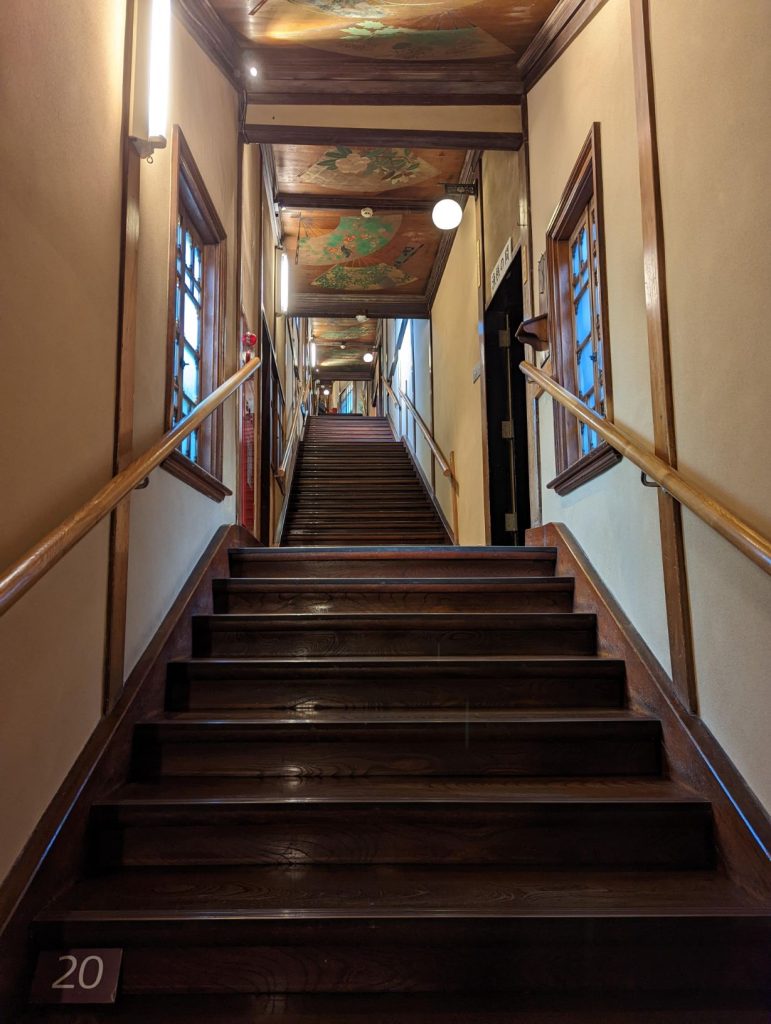
Japanese light x Hyakudan Kaidan 2022 – Light and Shadow, Hyaku-monogatari
I visited the summer exhibition “Japanese Light x Hyakudan Kaidan 2022 – Light and Shadow, Hyaku-monogatari”. “Japanese light x Hyakudan Kaidan” has been ongoing since 2015. The theme of this year’s exhibition is Light and Shadow and Hyaku-monogatari, with contemporary art by various artists displayed in each banquet. Hyaku-monogatari means one hundred ghost stories, visitors can encounter many specters and ghosts in banquets. The admission fee was 1,500 yen.
※This exhibition has already closed now.
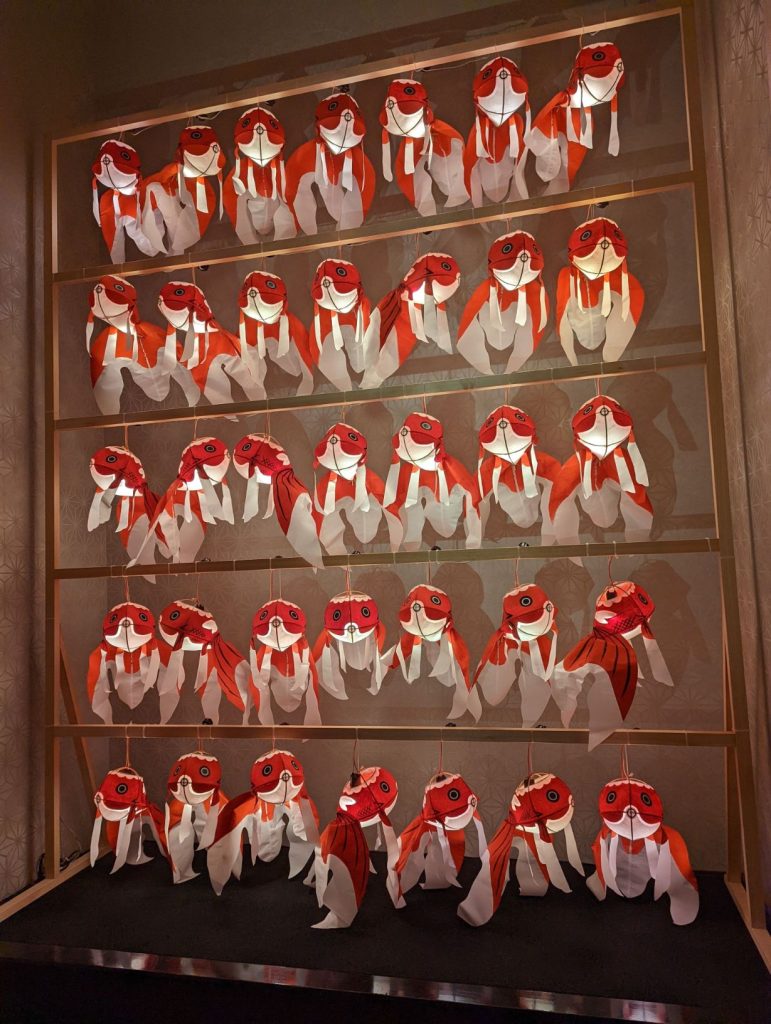
Raden Elevator
To get to the Hyakudan Kaidan, enter from the main entrance of Gajoen and take the elevator on the left to the upper floor. You will be surprised at the glittering decoration on the elevator door. It is decorated with mother-of-pearl inlays(螺鈿,raden), a craft in which shells are pasted with lacquer. The paintings depict butterflies, peonies, and lions. The outlines of the paintings appear golden.
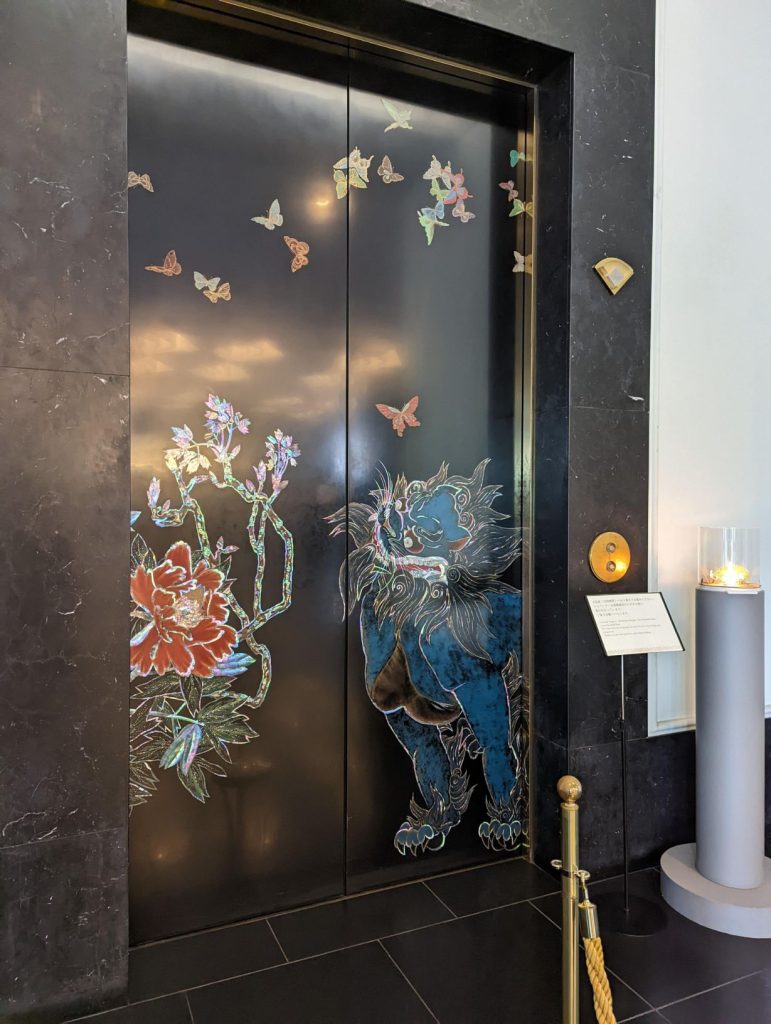
The black wall inside the elevator is also vividly decorated with butterflies, peonies, and lions. The entire surface is breathtakingly decorated with mother-of-pearl inlay. The entrance to the Hyakudan Kaidan is gorgeous.
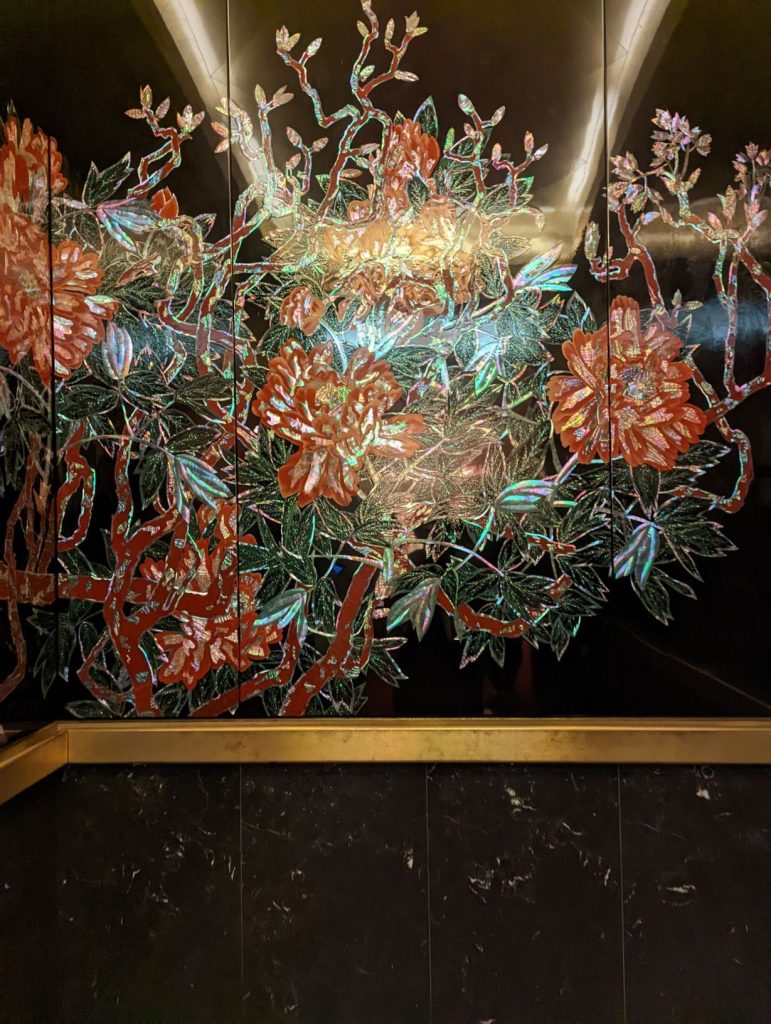
Hyakudan Kaidan and the exhibition
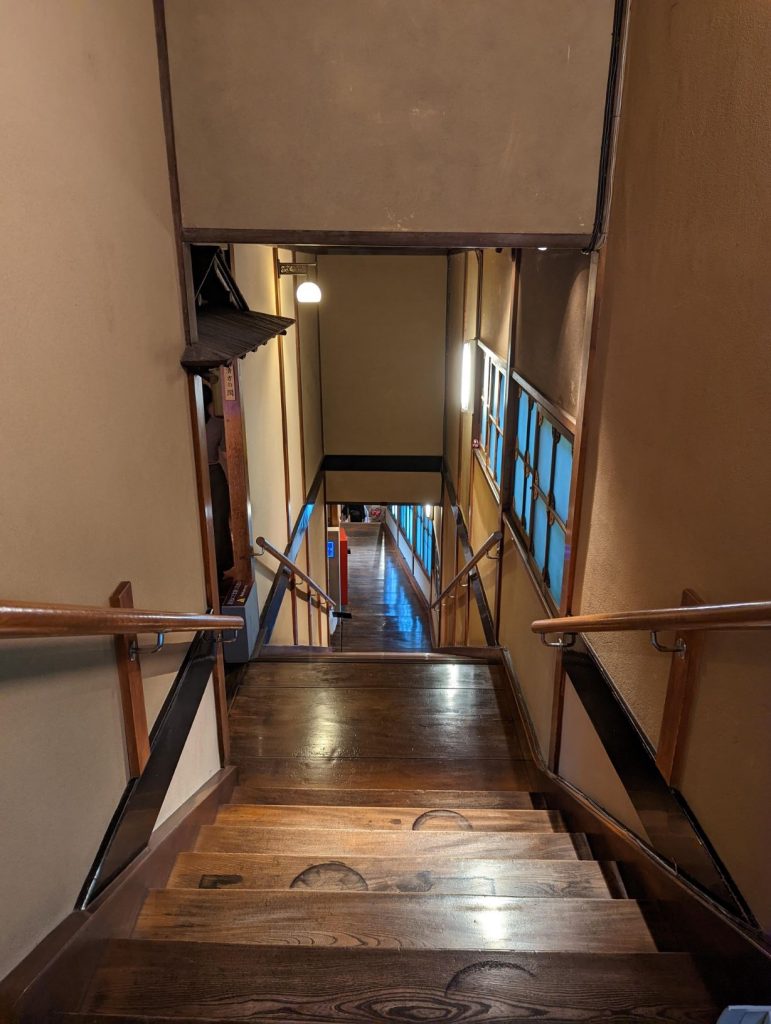
Hyakudan means 100 steps, but there are only 99 steps. The official guide book for Hyakudan Kaidan states the following.
One might notice that the staircase only has 99 steps.There are a number of theories as to why it only has 99. For example, ancient Chinese tradition held that odd numbers were luckier than even numbers. Another possibility is that, only 99 steps were used since 100 could be seen as symbolizing perfection. and if one has reached perfection, all that remains afterwards can only worsen.Here at the Hotel Gajoen Tokyo, we believe that the staircase was built with 99 steps to symbolize that we must not be satisfied with what we have created now – we must always be striving to reach greater heights of perfection.
The official guide book for Hyakudan Kaidan
The exhibits included a variety of light art using bamboo, displays depicting famous Japanese ghost stories, tall horse-like objects, cute yokai, and decorations using fresh flowers. Each of the Japanese-style tatami rooms themselves also had Japanese paintings and sculptures.
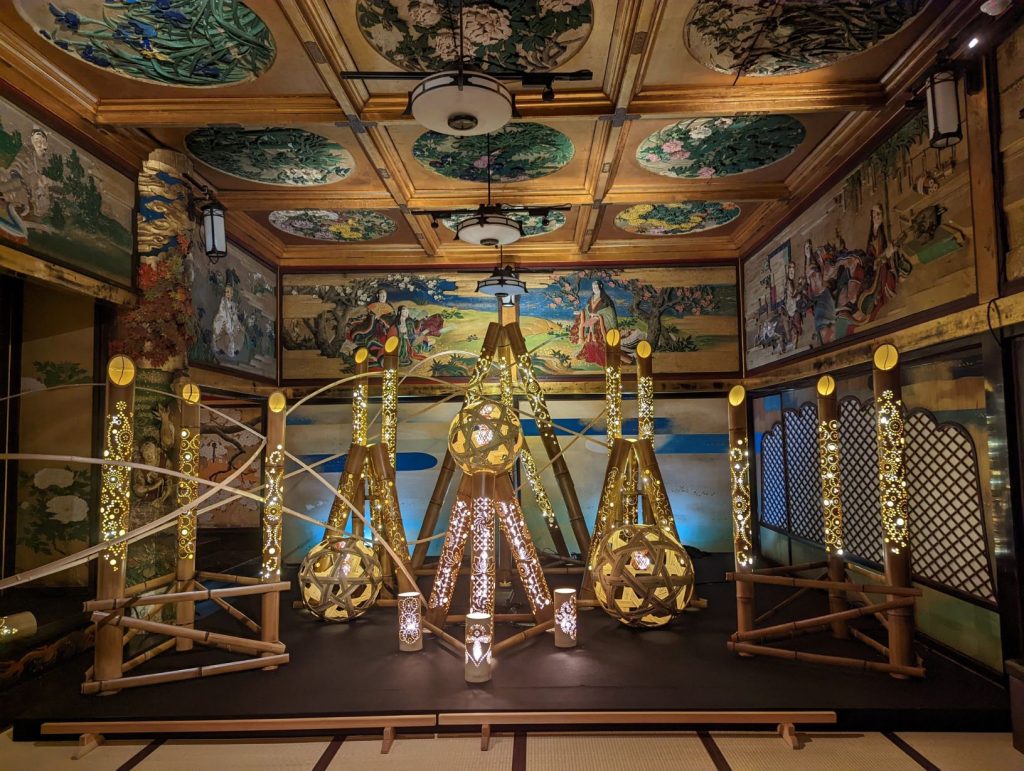
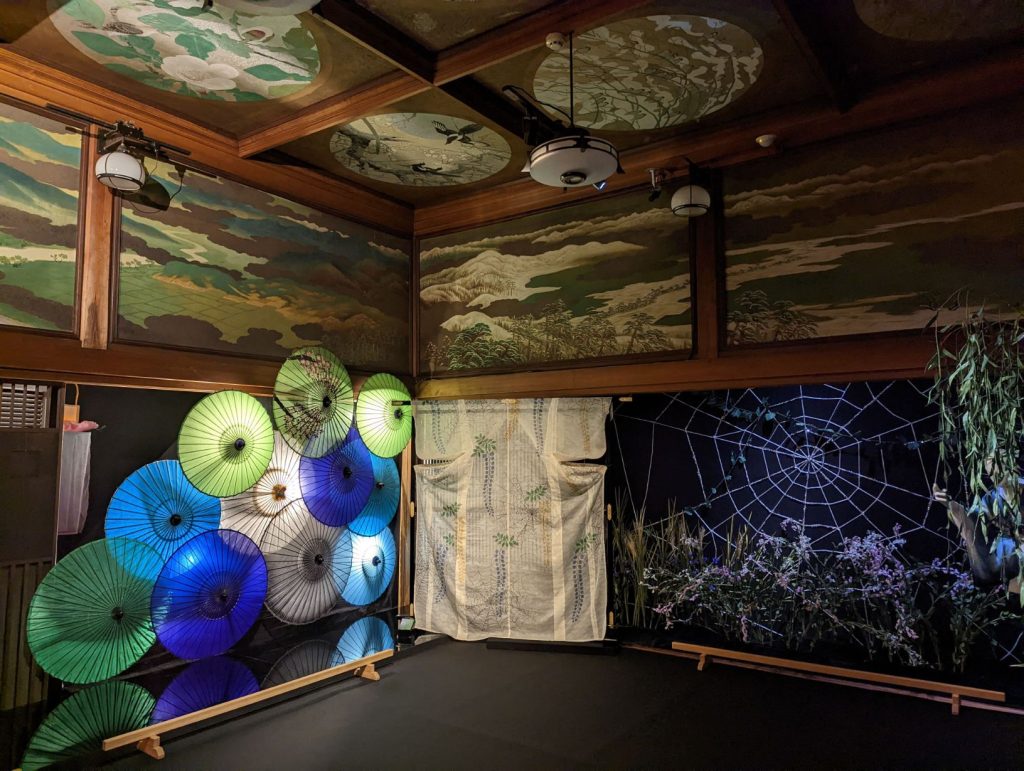
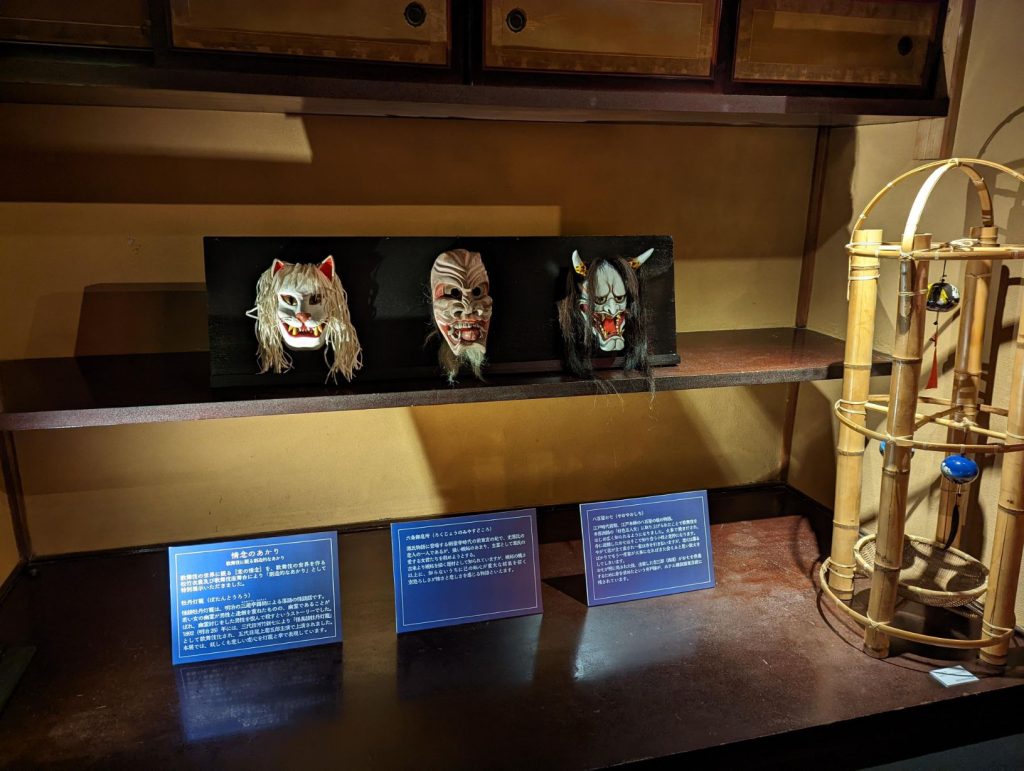
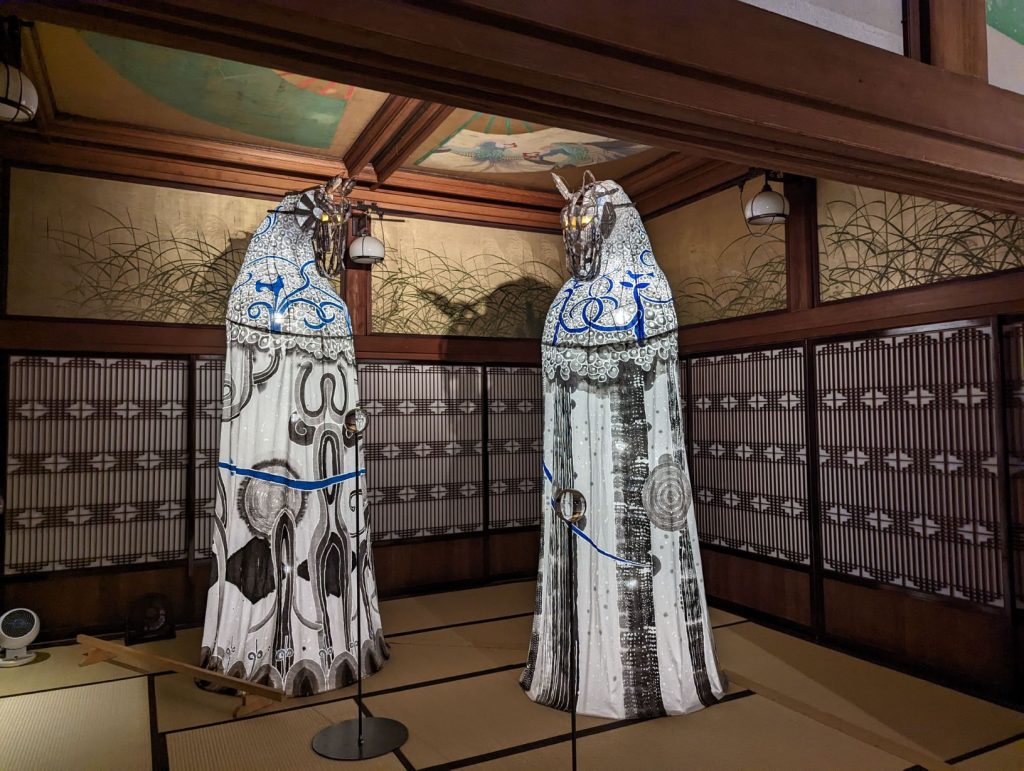
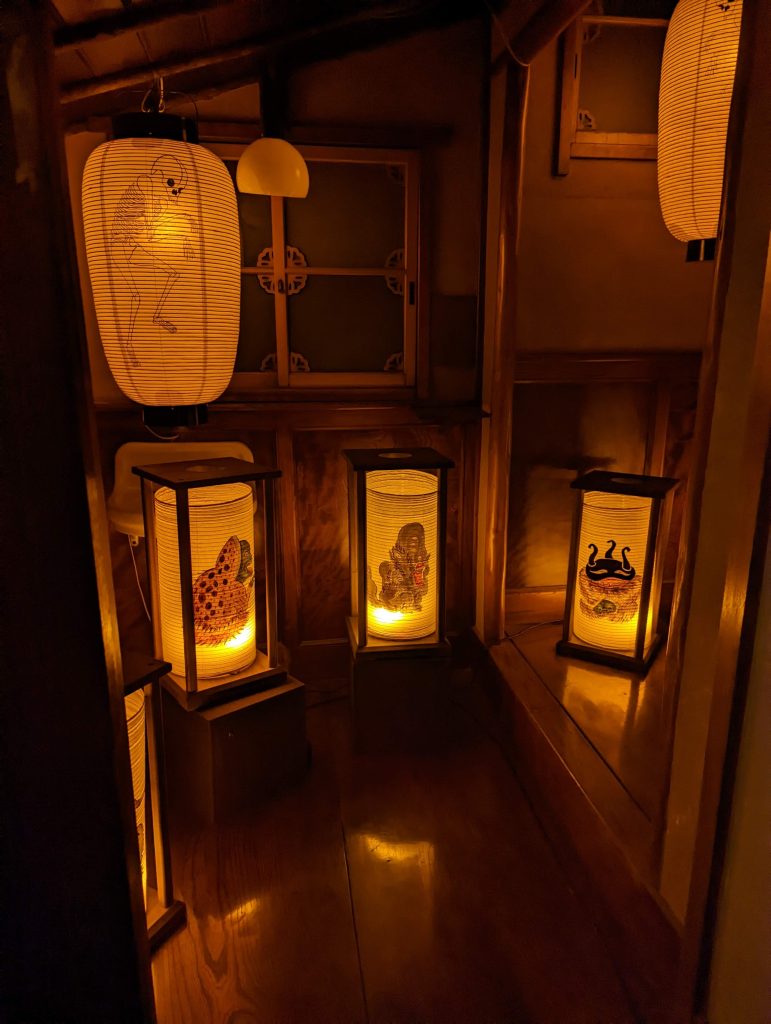
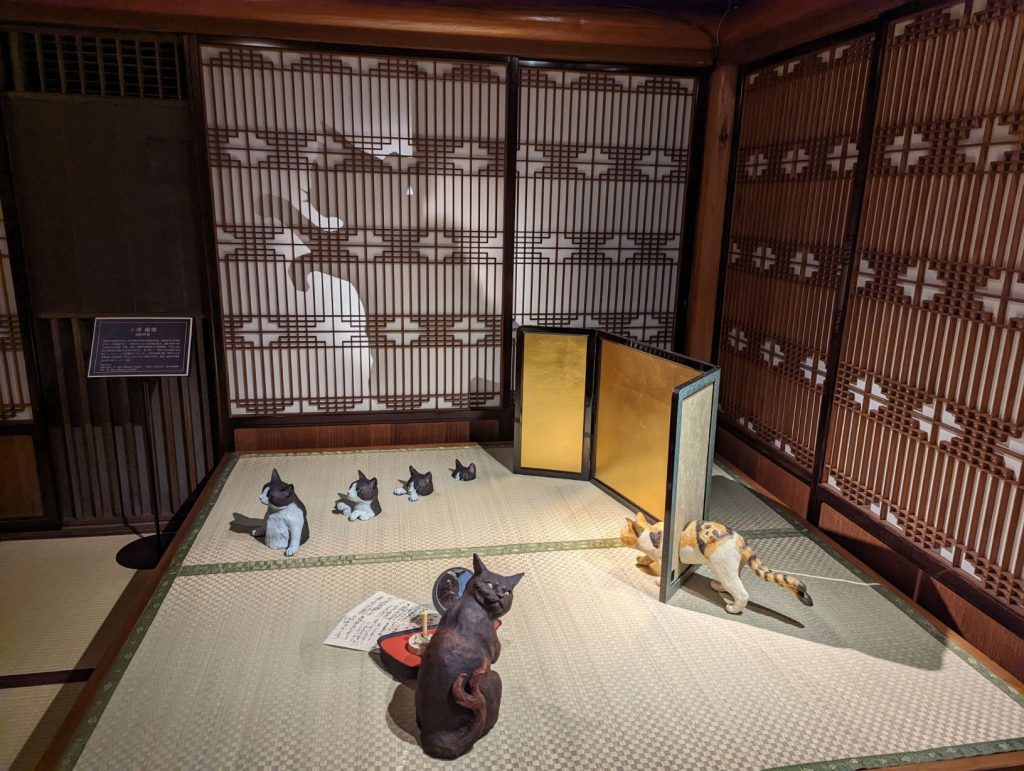
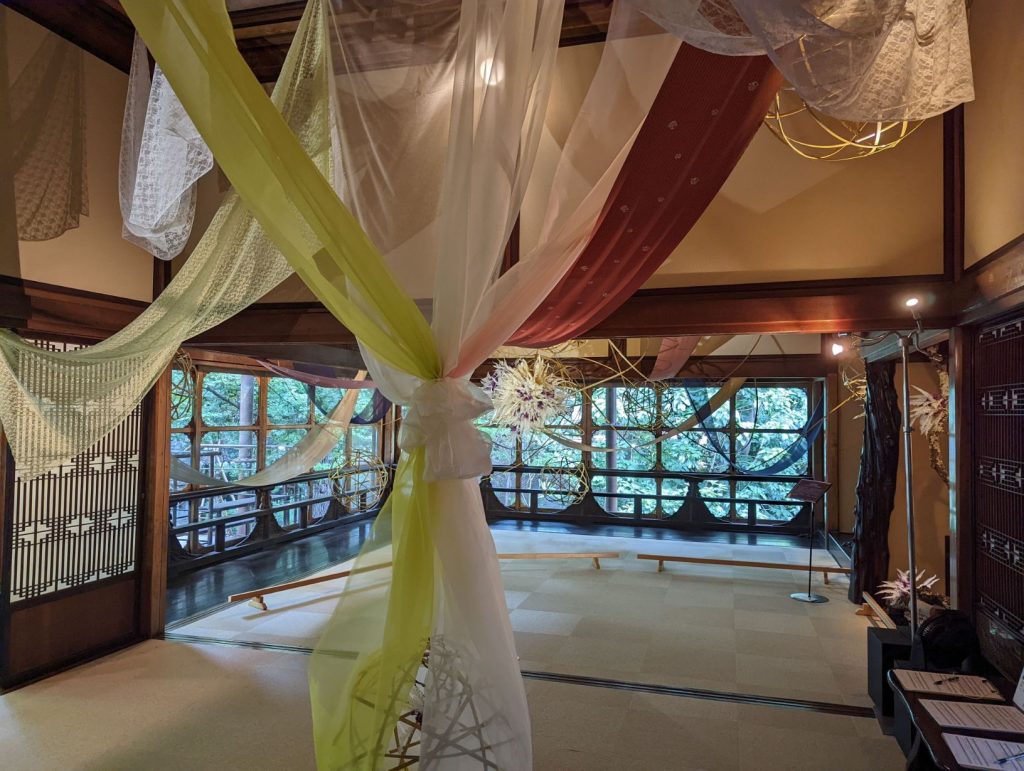
Interior of Gajoen
Entering the entrance, the Hyakudan Kaidan is on the left, the garden and Arco Tower are in front, and the bridal salon, restaurants, and banquet halls are on the long corridor on the right. The front of the entrance is decorated with dynamic flower arrangements. You can also see greenery through the glass, which is beautiful.
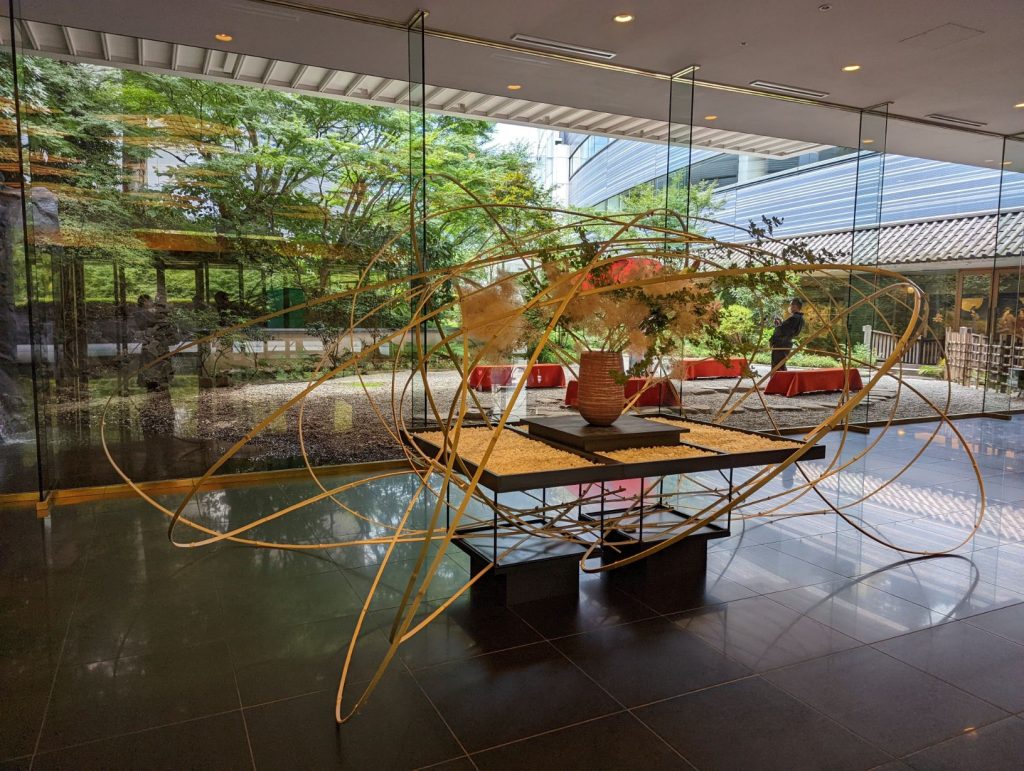
Walking down the chic black passageway with slightly dimmed lighting to the right, several colorful Japanese paintings appear on the right hand side under a tiled roof-like decoration. The bridal salon is also in this corner.
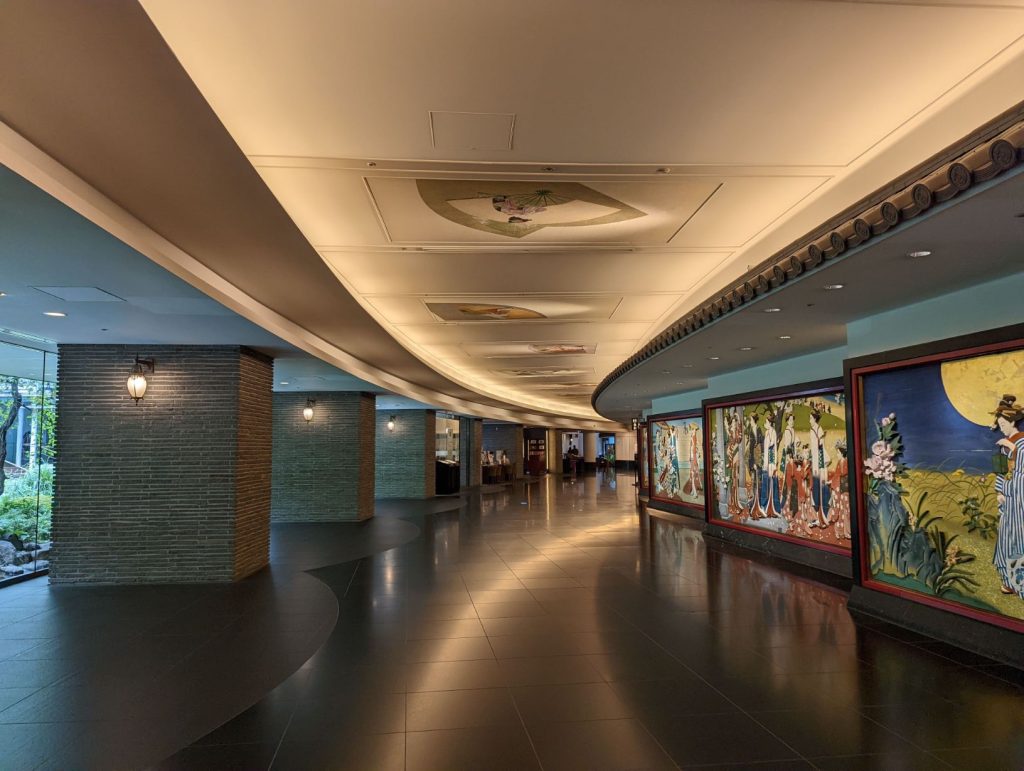
Further on, there is a waterway that connects to Kintaro-ike Pond(金太郎池) in the garden outside. The prints lined up on the left side seem to be famous works of art. Then comes the famous Maneki no Daimon(招きの大門) in front. Behind this gate is the area for restaurants and banquet halls.
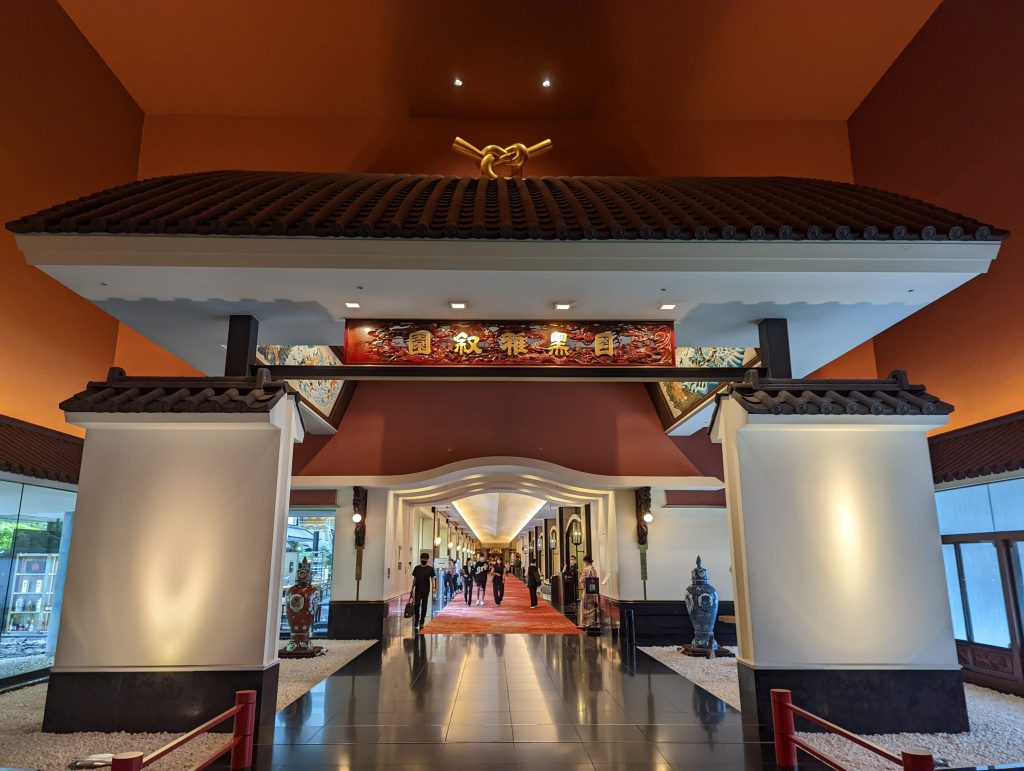
This is the famous restroom. It’s so spacious inside! It’s hard to believe it’s a restroom! You should definitely visit.
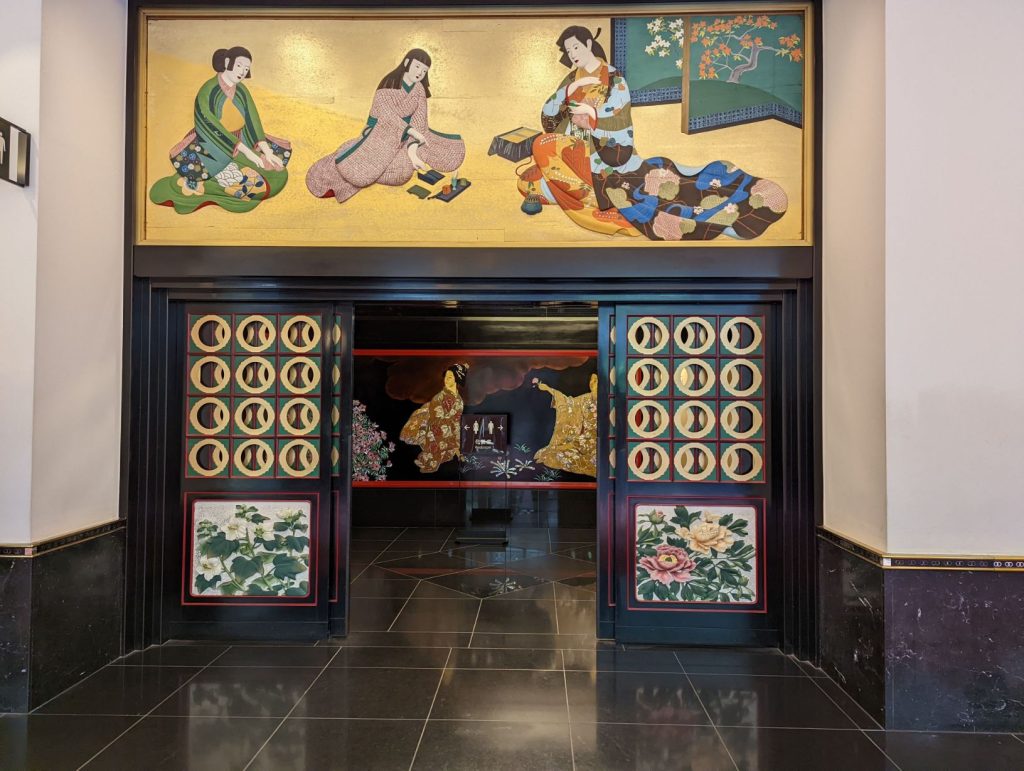
The back area is not Japanese style but a little western style. The spiral staircase and elevator to the banquet hall. This is a wedding photo spot.
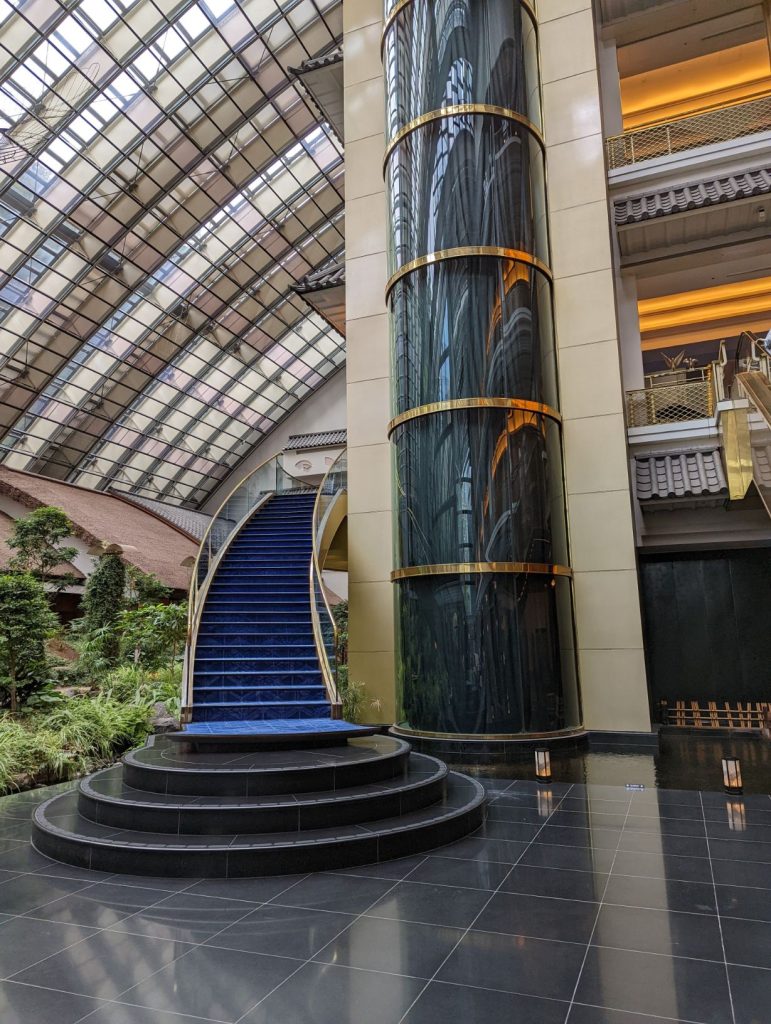
Since this is a comprehensive wedding hall, there is also a chapel and a temple on a higher floor. This area is Western-style, a change from the Japanese-style. Gajoen has various types of banquet halls, including Japanese, Western, and Japanese-Western.
Outside the building, you will find a courtyard. It is not that large, but you can also go up a little and walk along the path behind the stone and green waterfall.
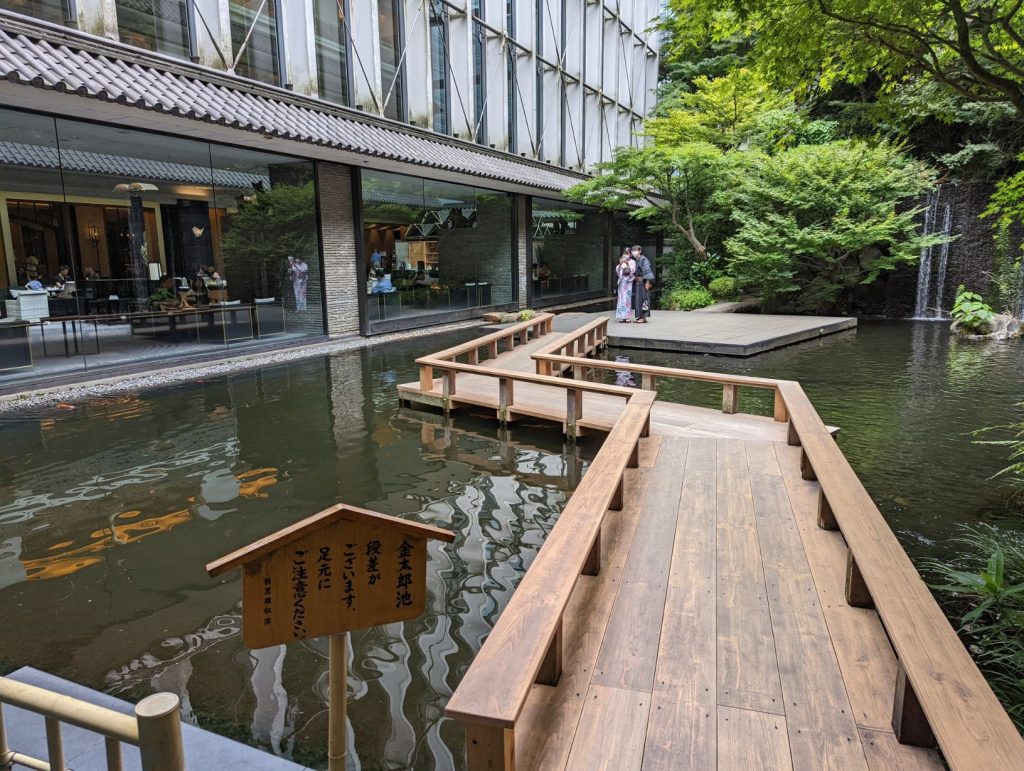
There are also several restaurants on the first floor. This thatched-roof building is a Japanese-style restaurant. It is strange to find this building surrounded by trees inside building.
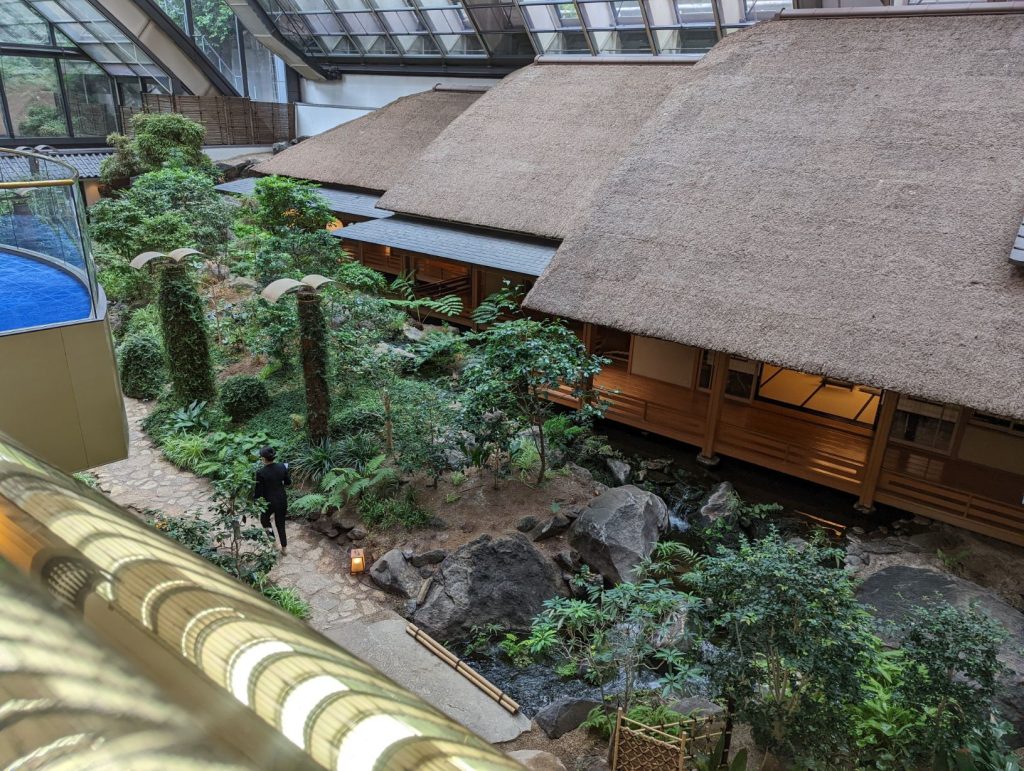
If you go up the stairs from the pavilion toward Arco Tower, where the Amazon Japan headquarters is located next door, you can arrive at Meguro Station without going up Gyojinzaka on your way back!
Conclusion
Hotel Gajoen Tokyo is a museum of Japanese beauty. It is said to have been called the Dragon’s Palace for its elegant Japanese-style space surrounded by glittering furnishings, and was also used as a model for Spirited Away. There are many things to see, such as the Hyakudan Kaidan, which is wonderfully decorated in every room, and the special exhibitions held there, as well as the restrooms, courtyard, and restaurant. Please stay and visit once by all means.

Japanese OL. (OL means “office lady”. Women who work in offices.)
I was born in a rural part of the Kanto area in the latter half of the 1980s. I live and work in Tokyo now. I live with my husband. I study English by writing this blog!

